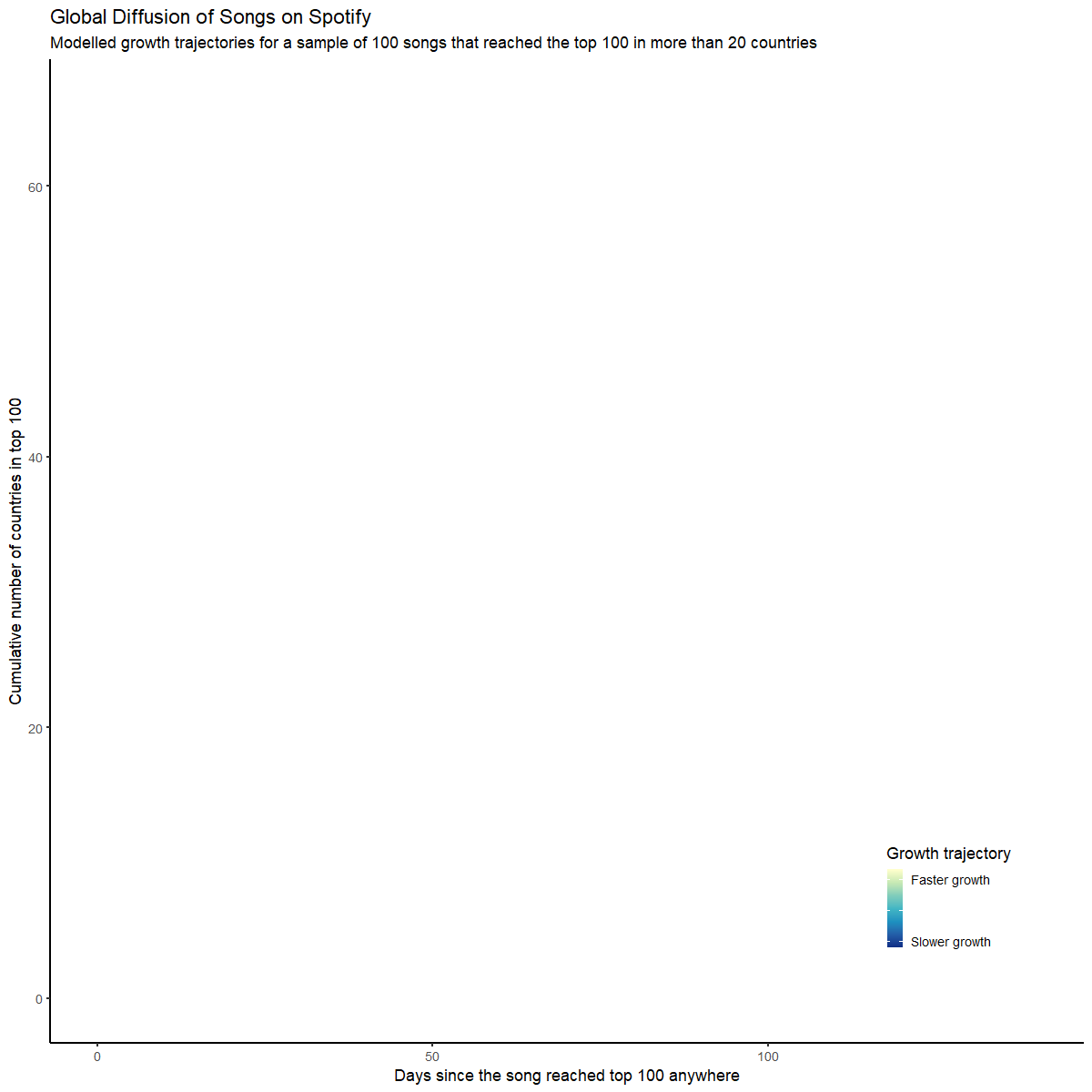Tod Van Gunten
Music streaming as global cultural diffusion
The Music streaming as global cultural diffusion project uses daily global rankings data from Spotify to analyse processes of cultural globalization in music. For a description of the first stage of the project, please read here.

This image illustrates the number of countries where each song is among the top 100 most streamed songs (on a daily basis) and the speed at which the song reaches the maximum number of countries that it reaches. Cooler colours indicate slower diffusion trajectories, that is, songs that take more days to achieve their widest global reach. Warmer colours indicate faster diffusion trajectories, that is, songs that take fewer days to achieve their widest global reach. A significant number of songs achieves its global reach extremely quickly (those songs appearing as a near-vertical line followed by a horizontal line). These growth trajectories are probably driven by marketing and/or algorithmic promotion. Slower diffusion trajectories may correspond to more endogenous, "word of mouth" processes of achieving global popularity. See Gabriel Rossman, Climbing the Charts: What Radio Airplay Tells Us About the Diffusion of Innovation (Princeton University Press, 2012) for theoretical background on diffusion processes in popular music.
Thanks to the Creative Informatics Programme for funding and support, and to Edward Martin and Aybuke Atalay for collaboration.